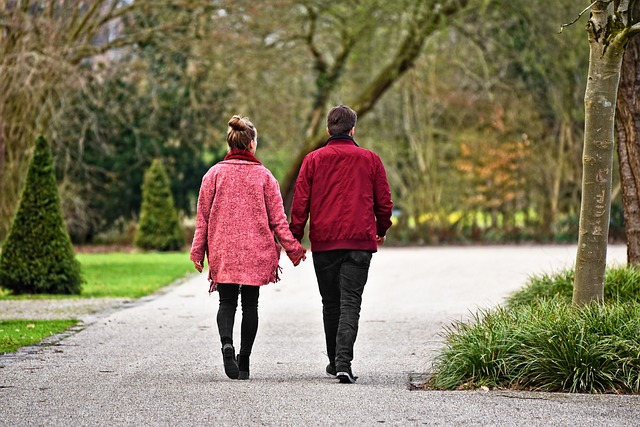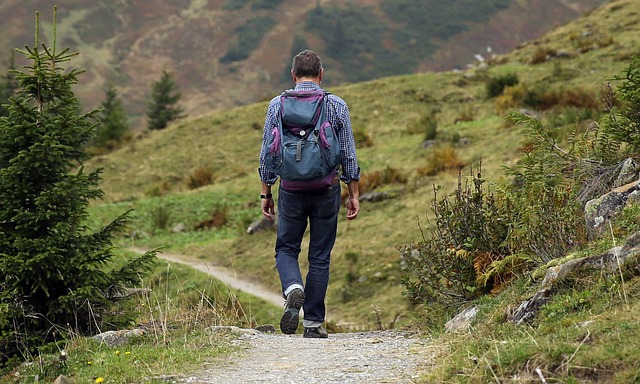The distinction between hiking and walking is hazy. While both activities involve walking, many people identify as only hikers or only walkers. Comparing and contrasting the two activities aids in differentiating them.
Walking vs. Hiking
People utilize a variety of factors to determine whether they are hiking or merely walking. Many hikers, for example, do not wish to stroll through cities, suburbs, city parks, or even along country roads. They prefer an entirely natural setting.
Hiking
- Natural trails serve as the hiking surface.
- Natural regions such as parks, woods, and deserts
- Hiking boots or shoes; walking sticks or poles; and, if the hike is long, outdoor survival kit.
- Calorie burn: Due to slopes and uneven surfaces, calorie burn is usually larger than walking.
- The frequency varies but is occasionally limited by the season.


Walking
- Walking Surface: Concrete, gravel, sand, or even inside or on a treadmill.
- Anywhere, including streets, parks, and shopping centers.
- Shoes for walking
- Calorie burn: Generally lower than hiking.
- Frequency: Usually twice a week as part of a normal fitness routine.
Is it possible for a Walker to Become a Hiker?
Walkers can venture into the outdoors to spice up their walking regimen. If you live near a natural area, you are likely to appreciate going for a walk there on occasion. Make sure you’re up for the task of hiking uphill or on terrain with rocks and roots before you go.
If you are used to walking on paved surfaces, you will need to adequately prepare for a hike. There are several reasons why you should choose trail shoes rather than athletic shoes. Trail shoes protect the feet while also offering stability and traction. On rocky trails, a hiking stick or trekking poles provide extra stability.
Researchers discovered that strolling in a park or other natural area improves mental health and reduces stress. If you often walk in a gym or on a treadmill, consider including brief walks in nearby parks into your training routine.
Hiking and Trekking Instruction
When learning to hike, you’ll need to learn about trail etiquettes, such as the principle of leaving no trace, in addition to the proper footwear and equipment. If you pack it in, you must also pack it out.
Teach children to be environmentally conscious and to stay on the route. You will most likely need to bring your own water and understand how to address restroom needs when there are no toilets.
If you rarely walk or hike, or if you only walk on flat, paved surfaces, you should train before embarking on a long hike or excursion. There are two goals to training to walk hills at high altitudes.
First, you must improve your overall aerobic fitness by performing activities that require you to breathe heavily and sustain that effort for longer periods of time. You should also work on hill exercises or raise the elevation on your treadmill to prepare your muscles.
Trekking indicates that your trip or walk will last two or more days and that you will carry your kit in a backpack. You will need to practice using your equipment. A journey is something like walking the Camino de Santiago. Although this pilgrim route is referred to as a walk, much of the time, you will be climbing and descending steep slopes on natural surfaces.
Tips for Hiking and Backpacking Safety
Hiking is a terrific way to mix up your workout program, and a few easy safety precautions will ensure a pleasurable excursion. In addition to being physically prepared, you should choose the correct trail, pack the right gear, and know how to care for yourself in an emergency.
Home Preparation
Before you go hiking, make the following preparations:
Choose a trail that is appropriate for your level of fitness, the length of time you have available, and the type of terrain you prefer.
Get a hiking handbook or a topographic map. Also, always check the weather forecast before venturing out.
Keep in shape. Conditioning and balance should be worked on. Make sure the trail you choose is appropriate for your skill level. Start with mild hikes in the early season and gradually increase your endurance throughout the season.
Tell someone where you’re going and when you expect to return.
If feasible, arrange for a trekking companion. While it is better to avoid hiking alone if you must choose more popular trails so that if you get into trouble, someone will most likely be on the same trail to aid you.
On the Road
Protect yourself when hiking by doing the following:
To prepare for changeable weather, dress in layers and always have rain gear. Avoid cotton clothing since it insulates poorly when wet and dries slowly.
Check the fit of your hiking footwear. Never use new footwear on a lengthy trip to avoid blisters and uncomfortable places. Break them in gradually by going on shorter hikes or walking around your neighborhood first.
Carry a compass and a topographic map of the area, and be familiar with their use.
Pay attention to path landmarks and consult your map frequently, even if the track is evident. You should also turn around from time to time to view how the trail appears from the opposite direction. This will make it much easy to find your way back.
Avoid becoming isolated from your companion or group. Keep your group in sight at all times and stop and re-group at any trail junctions.
Keep a whistle close at hand. The worldwide signal for assistance is three whistle blasts.
Drink frequently to avoid dehydration. Drink water from ponds or streams only after it has been treated by boiling, filtering, or using purification tablets.
Ten Hiking Essentials
The Mountaineers, a mountaineering club based in Seattle, suggests that all hikers bring the following ten essential items:
- A map or a compass. A map can assist you in finding campsites, ranger stations, water, and an emergency exit route in case of an accident. A compass can assist you in navigating unknown territory, especially in inclement weather when landmarks are obscured.
- Water, as well as a method to purify it. You will suffer on the path if you do not stay hydrated since you are more prone to cold and altitude sickness.
- Additional meal. You never know if you’ll be out longer than intended, so plan accordingly.
- Extra clothing and rain gear. Bring additional layers because the weather can be unpredictable, especially above the treeline. Avoid cotton (it traps moisture on your skin), and pack a cap and gloves.
- Matches and a firestarter. If you become lost or have to spend the night outside, a fire can assist in preventing hypothermia and signal for aid.
- First-aid supplies. Take a basic first-aid course to learn how to treat probable trail injuries.
- Knife or multi-functional tool? You’ll need a knife for any type of emergency repair.
- Headlamp or flashlight. A flashlight can help you find your way if you become lost on the trail after dark. Make sure to bring additional batteries.
- Sunscreen/sunglasses. You need a pair of sunglasses to prevent snow blindness and sunscreen from preventing sunburn, especially above treeline when there’s a skin-scorching combo of sun and snow.
- Shelter. If you don’t make it back before dusk, bring a lightweight emergency bivvy so you can sleep for the night.
- In Case of Emergency
- Stop, count to ten, drink some water, take a snack, and examine your situation if you feel lost.
- Inquire about the following: Can you remember where you were the last time you were assured of your location? If so, try to return to that place. Can you return to a previously visited trail or location? Otherwise, stay still. Staying stationary makes it easier for rescuers to discover you near your original path.
Here are some more pointers:
- If you become disoriented, stay calm, stay dry, stay warm, and stay still.
- A campfire can give heat, light, and comfort if you need to stay the night.
- A campfire can also assist others in locating you.
- If you think you can make it out of the woods, keep in mind that following streams downward will almost always take you back to signs of civilization.

In the event of an accident, at least one person should stay with the injured party. Understand and apply basic first aid skills. Others in the group should take meticulous notes and contact the local Forest Service.
To Conclude
Hikers and walkers share many similarities. Certainly, all hikers are also walkers, whether they recognize it or not. And walkers can benefit from getting out into green settings, putting some dirt on their shoes, and experiencing more of nature’s beauty.
Hiking is an excellent way to go outside while also improving your endurance and overall well-being.
Just be sure to plan ahead of time so that your trip is enjoyable.

